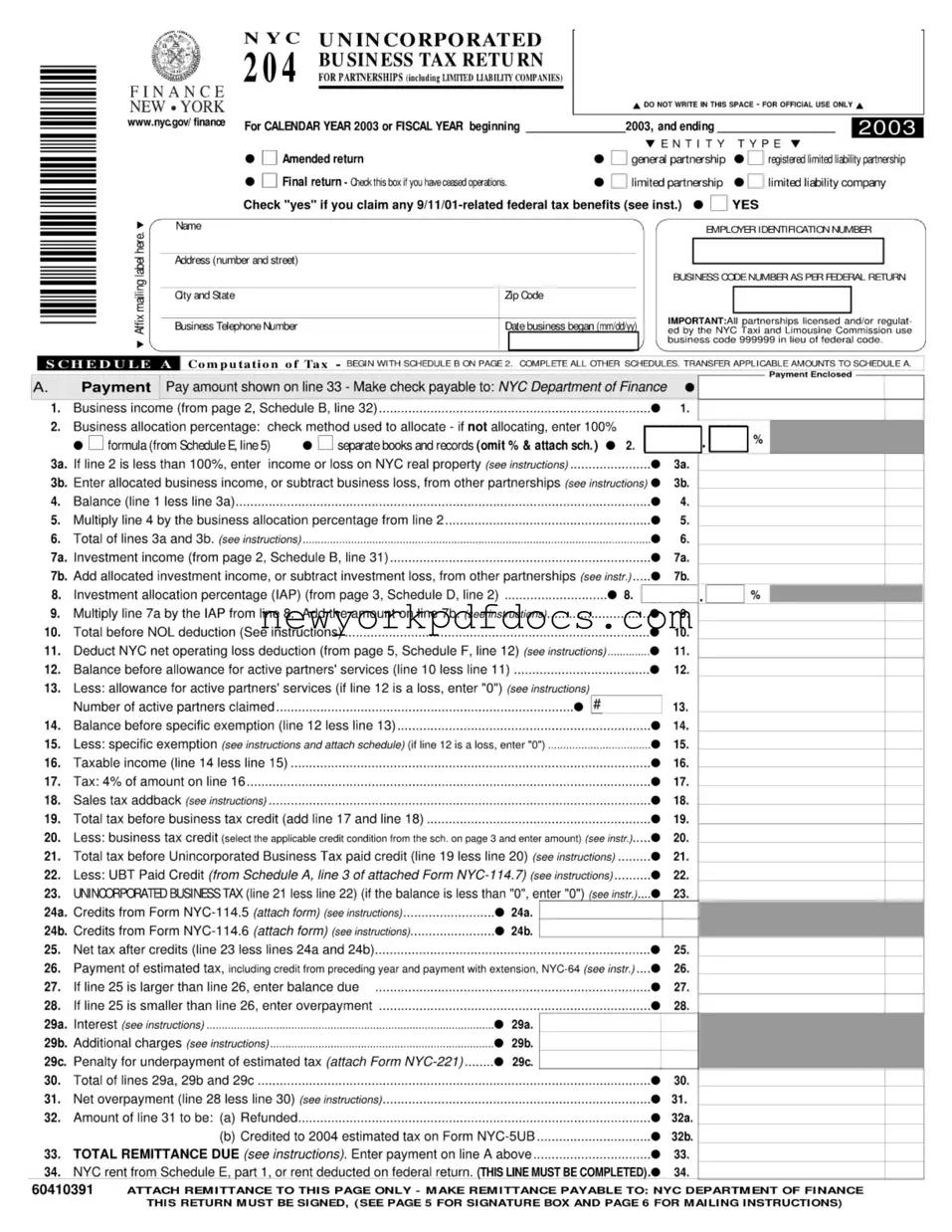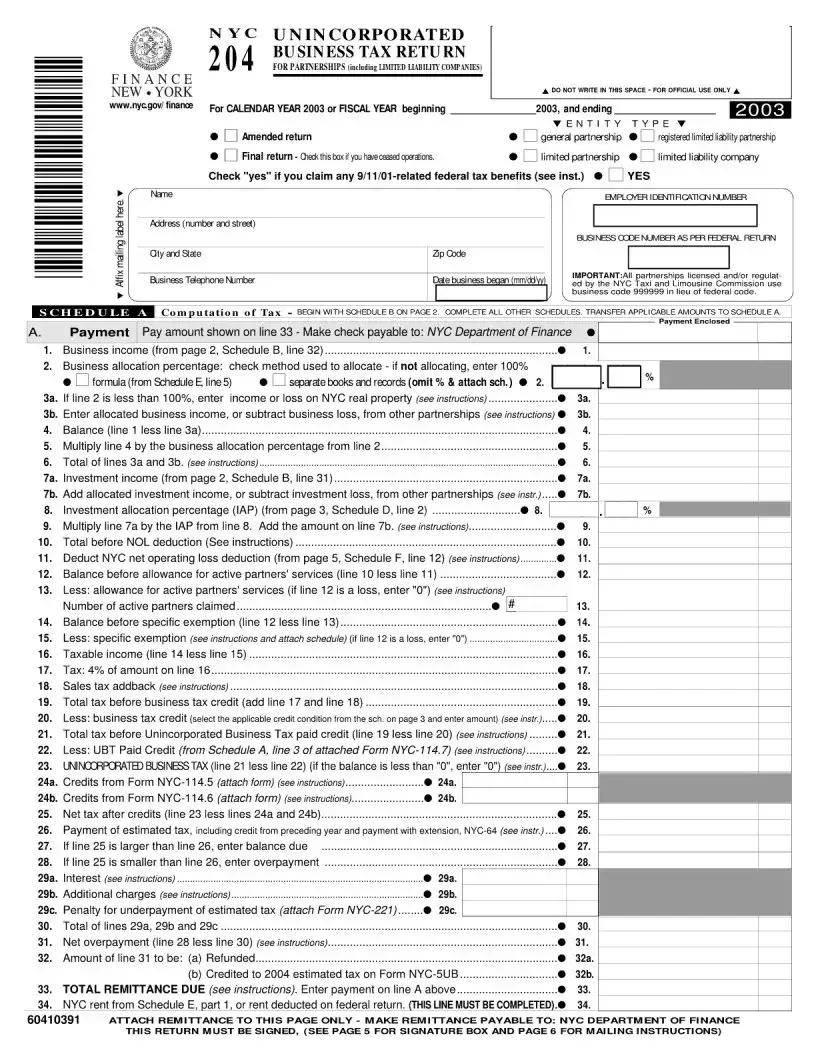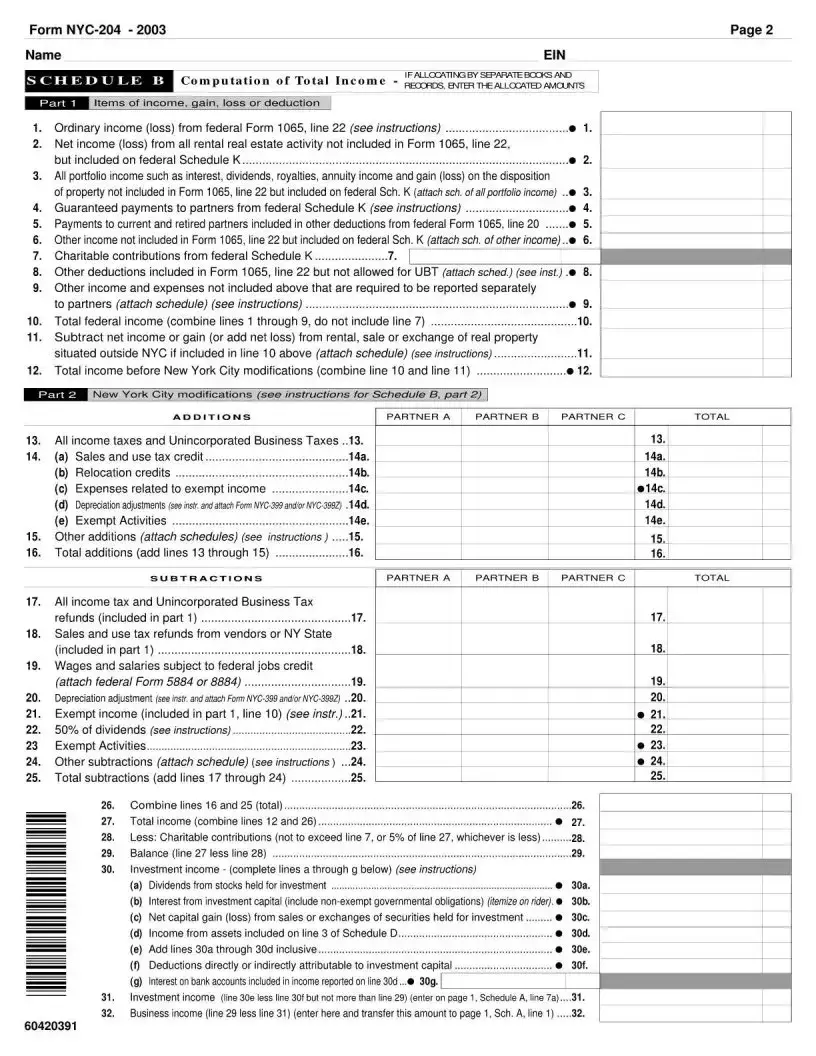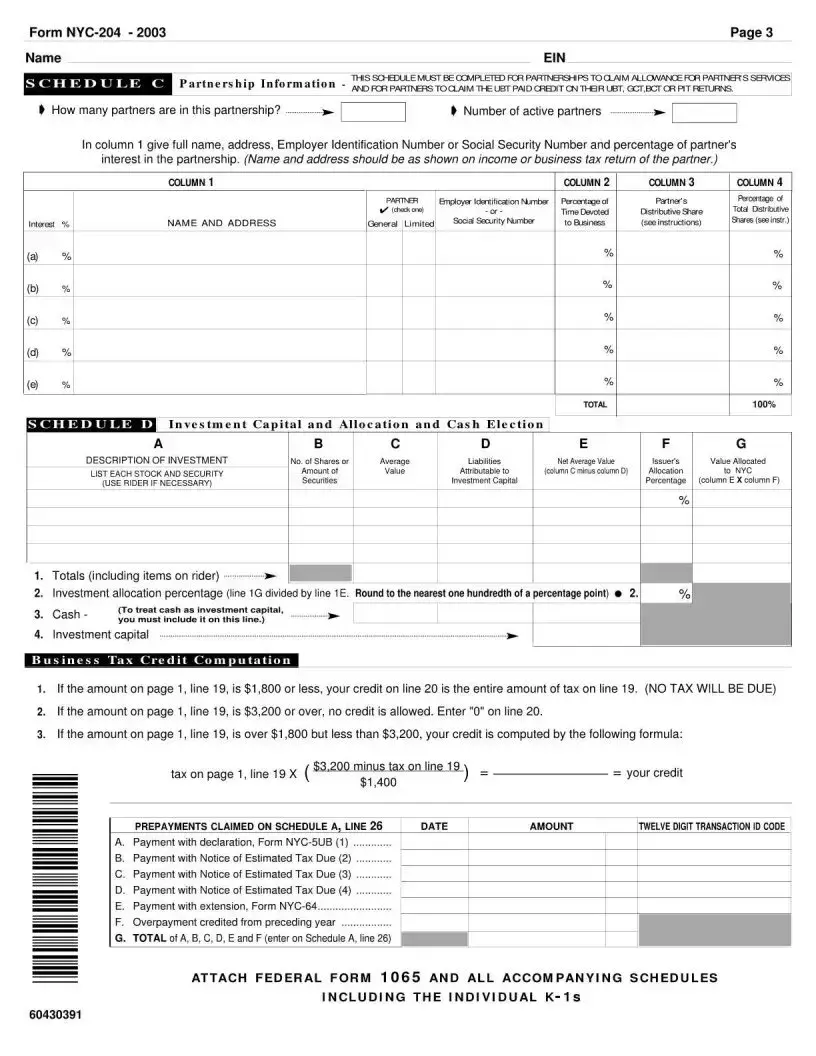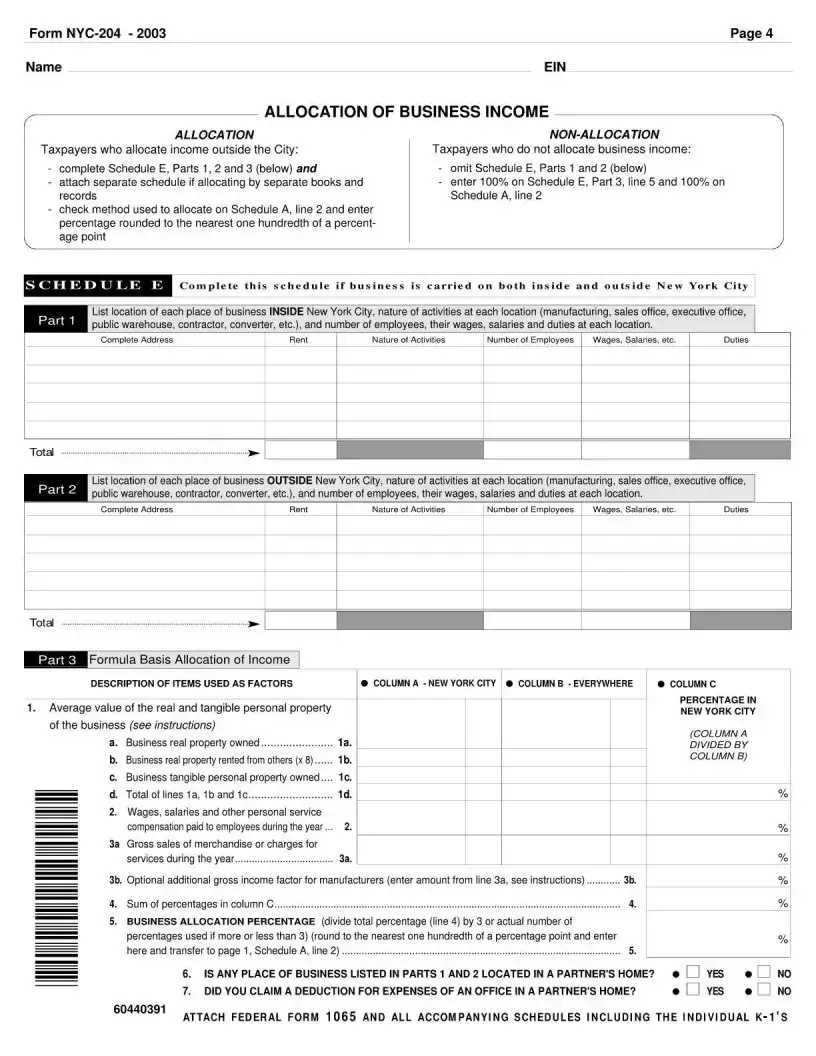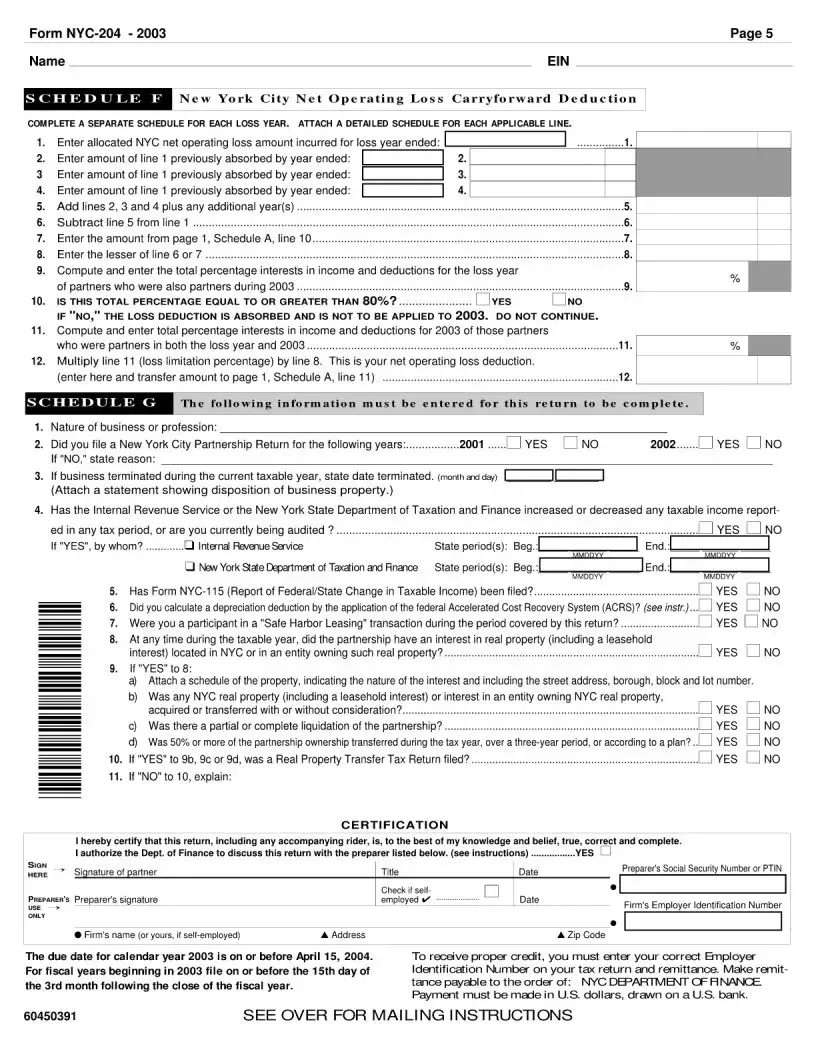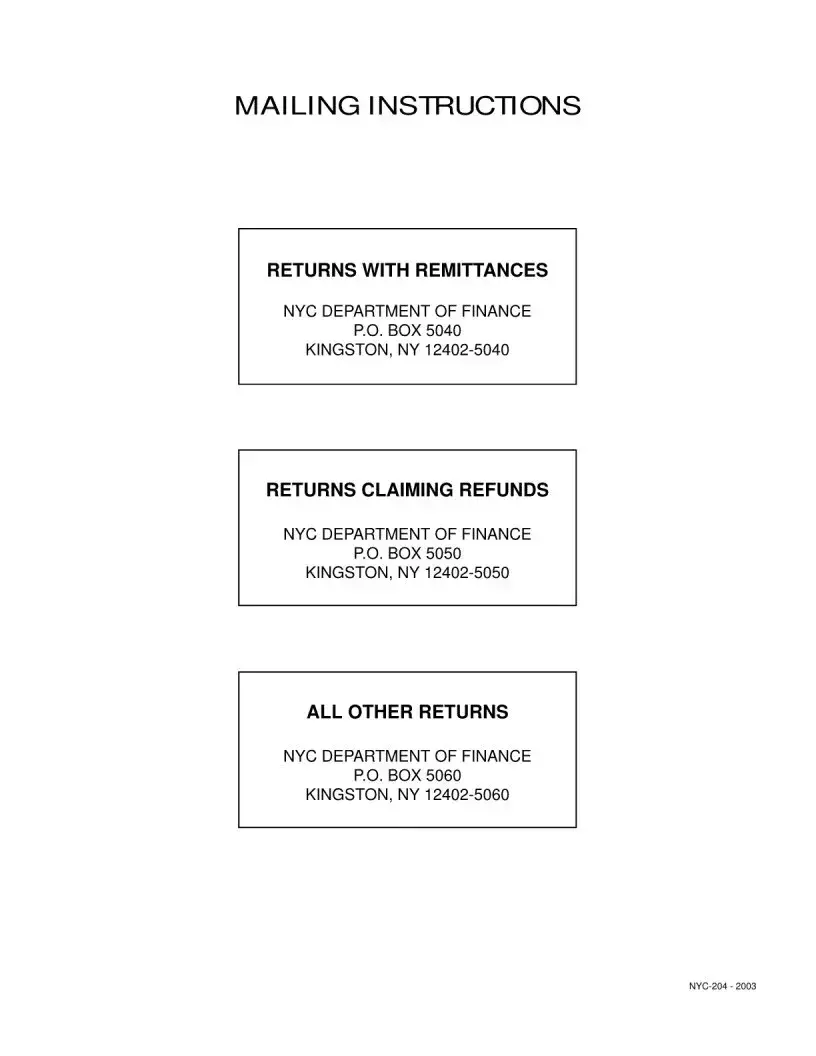The NYC 204 form is a crucial document for partnerships, including limited liability companies, operating within New York City. It serves as the Unincorporated Business Tax (UBT) return, allowing these entities to report their income and calculate the taxes owed to the city. The form is designed for use by partnerships that have either a calendar year or fiscal year ending in 2003. It includes sections for detailing business income, allocation percentages, and various deductions. Notably, the form requires partnerships to specify if they are claiming any federal tax benefits related to the events of September 11, 2001. Additionally, it encompasses a comprehensive breakdown of taxable income, investment income, and the applicable tax rates. The NYC 204 also provides for credits and deductions, enabling partnerships to reduce their tax liability. Completing this form accurately is essential, as it ensures compliance with city regulations and helps avoid potential penalties. Thus, understanding the components and requirements of the NYC 204 form is vital for any partnership engaged in business activities within New York City.
